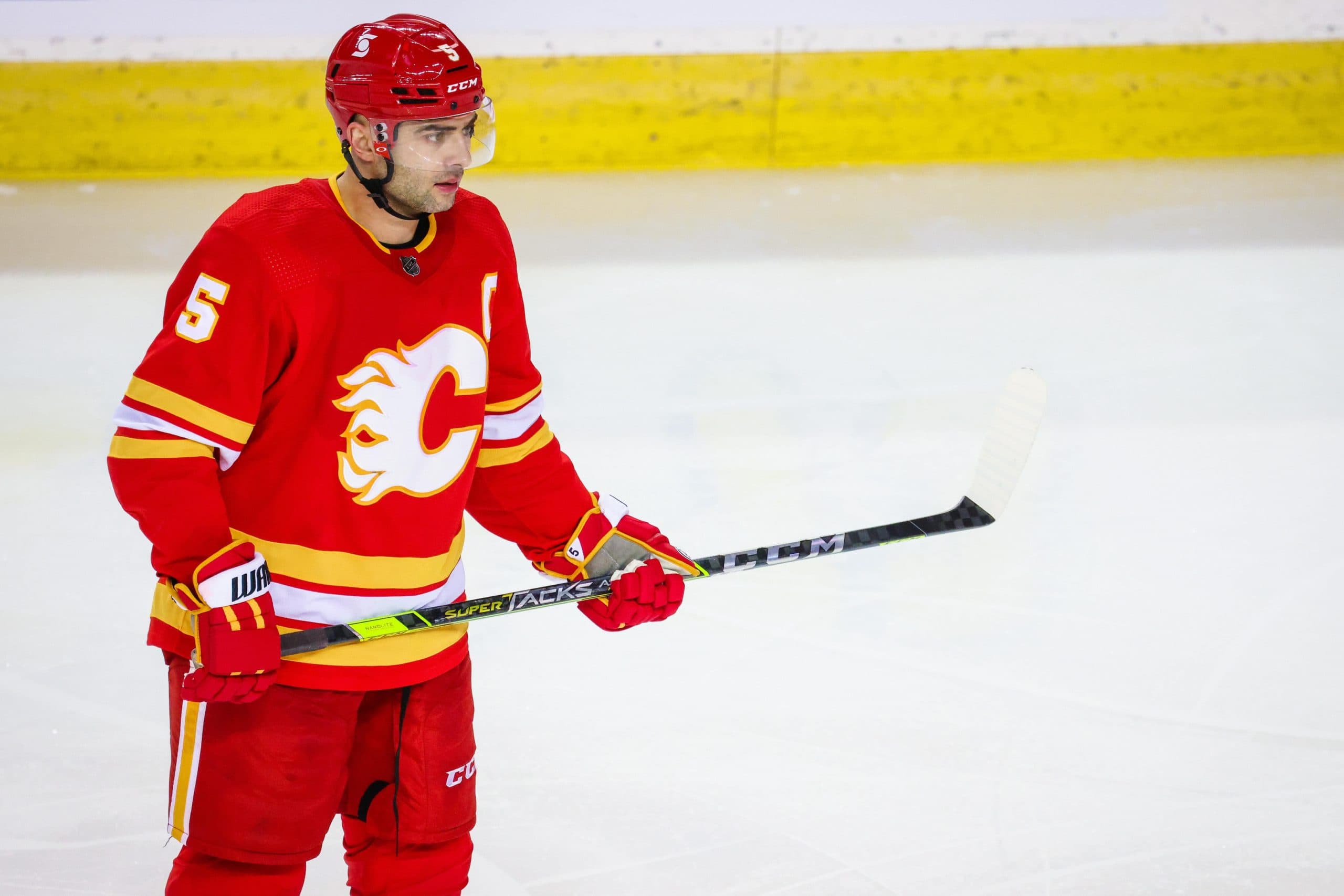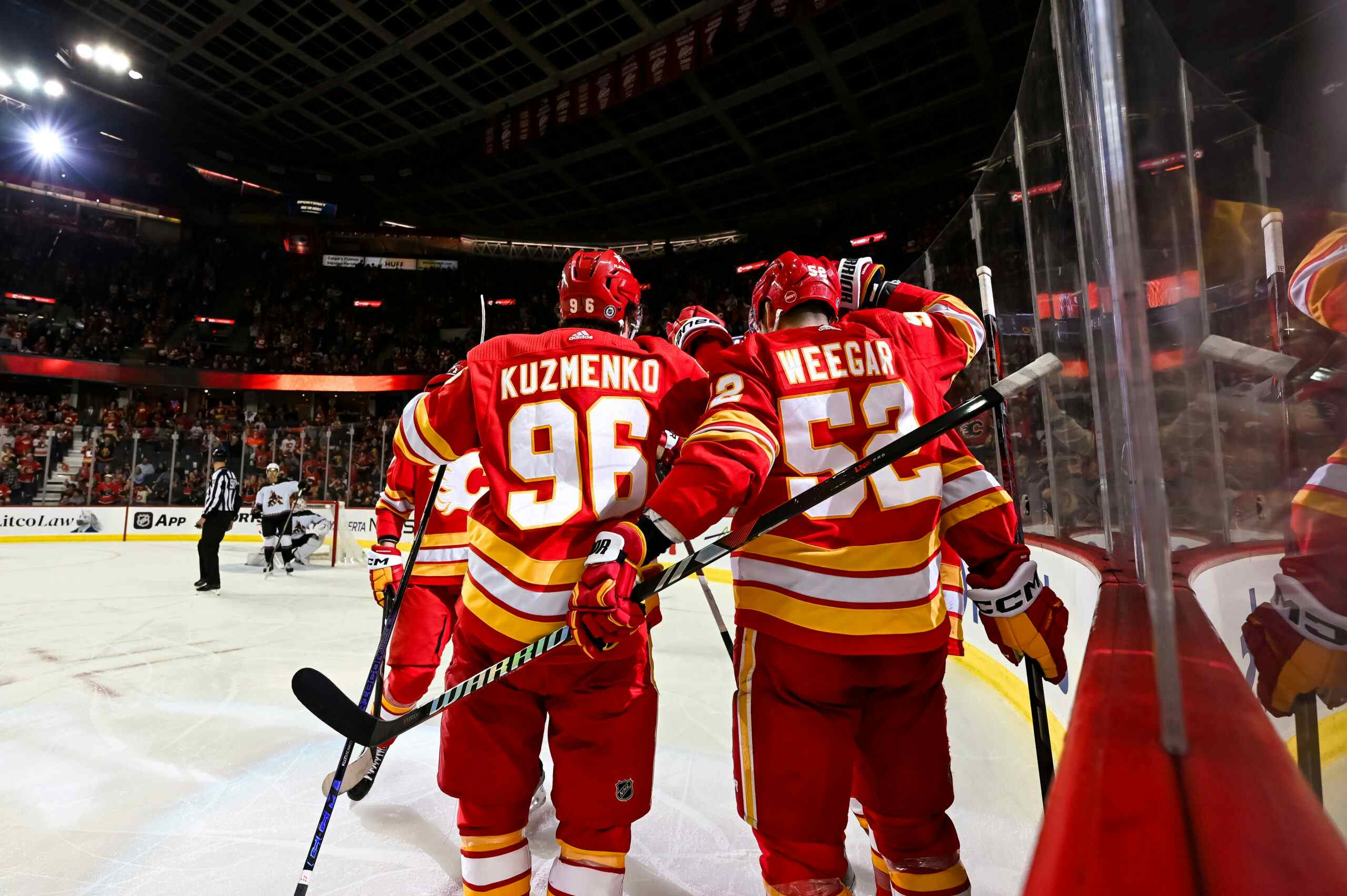Mark Giordano’s expansion exposure is nobody’s fault

By Ryan Pike
3 years agoAfter two months of hand-wringing, it became official on Sunday morning. The Calgary Flames have exposed long-time captain Mark Giordano in the Seattle Kraken expansion draft. Barring a side deal where the Flames bribe Seattle into avoiding him, Giordano will likely be selected by the Kraken.
It’s a less than ideal situation, but Giordano being the odd man out is really nobody’s fault.
Why didn’t they protect him as one of their three defensemen?
It’s mostly a matter of two factors: age, and the age curve.
- Rasmus Andersson is 24, signed at a reasonable $4.55 million cap hit through 2025-26, and he seems poised to keep improving.
- Noah Hanifin is 24, signed at a reasonable $4.95 million cap hit through 2023-24, and he took a big leap forward last season.
- Chris Tanev is 31, six years younger than Giordano, and he had an excellent season in 2020-21.
The decision was likely between Tanev and Giordano, and which player it’s more likely will crash down to replacement level first. Based on age, cap hits and aging curves, trends favoured Tanev.
Why not protect four defensemen as part of an eight skater scheme?
Well, then you hit the age problem again.
Aside from Mikael Backlund, who’s 32, here’s the ages of the six other forwards the Flames protected: 22 (Dillon Dube), 23 (Matthew Tkachuk), 25 (Andrew Mangiapane), 26 (Sean Monahan and Elias Lindholm) and 27 (Johnny Gaudreau). If the team protected four defensemen, they would have had to drop three protected forwards – likely Backlund and two prime-aged assets like Dube and Monahan.
It just wouldn’t make sense.
Why not trade Giordano before expansion?
The Flames probably tried this.
But when you look around the league, there are more problems. First, not many teams had flexibility with protected defensemen and most teams already had their spots locked down – and with Giordano only having one season left on his deal and being 37, not many teams would likely want him to replace a younger protected player. So if a team cannot protect Giordano, why would they trade for him? And if they did trade for him, thinking they might lose him to Seattle, they wouldn’t be able to offer much in return.
Why not bribe Seattle with assets to avoid Giordano?
Finally, Jeff Marek of Sportsnet’s 31 Thoughts Podcast noted last week that he had heard that the price Seattle is asking to avoid a specific player was a first round pick and a third round pick.
Unless the price came down significantly, sending two top 100 picks to Seattle to hold onto a 37-year-old defenseman for a season or two doesn’t make a lot of sense.
Giordano’s going to be 38 in October. He’s bucked the age curve in a major way during his career, but time will eventually catch up with him. It just doesn’t make a ton of sense for the Flames to expend so many assets betting against the house.
In other words: as many possible solutions may have seemed on the table for Brad Treliving to use to avoid potentially losing Giordano in expansion, they all had some big flaws and challenges involved that resulted in them not being viable options.
NHL clubs never expect to have a 37-year-old player that they’re disappointed about losing. Usually older players are like Matt Stajan was near the end of his tenure: reliable, if flawed, niche assets. On the contrary, Giordano is an old, reliable car who can still has his original parts and can be leaned on heavily on a daily basis. The Flames have had him forever and, against all odds, he’s running well and hasn’t broken down. But the Flames are in a situation where they need to choose between committing to a newer vehicle, or sinking resources into him instead.
As disappointing as it may be, it just makes more sense to invest in a new car even if Giordano hasn’t broken down quite yet.
Recent articles from Ryan Pike





